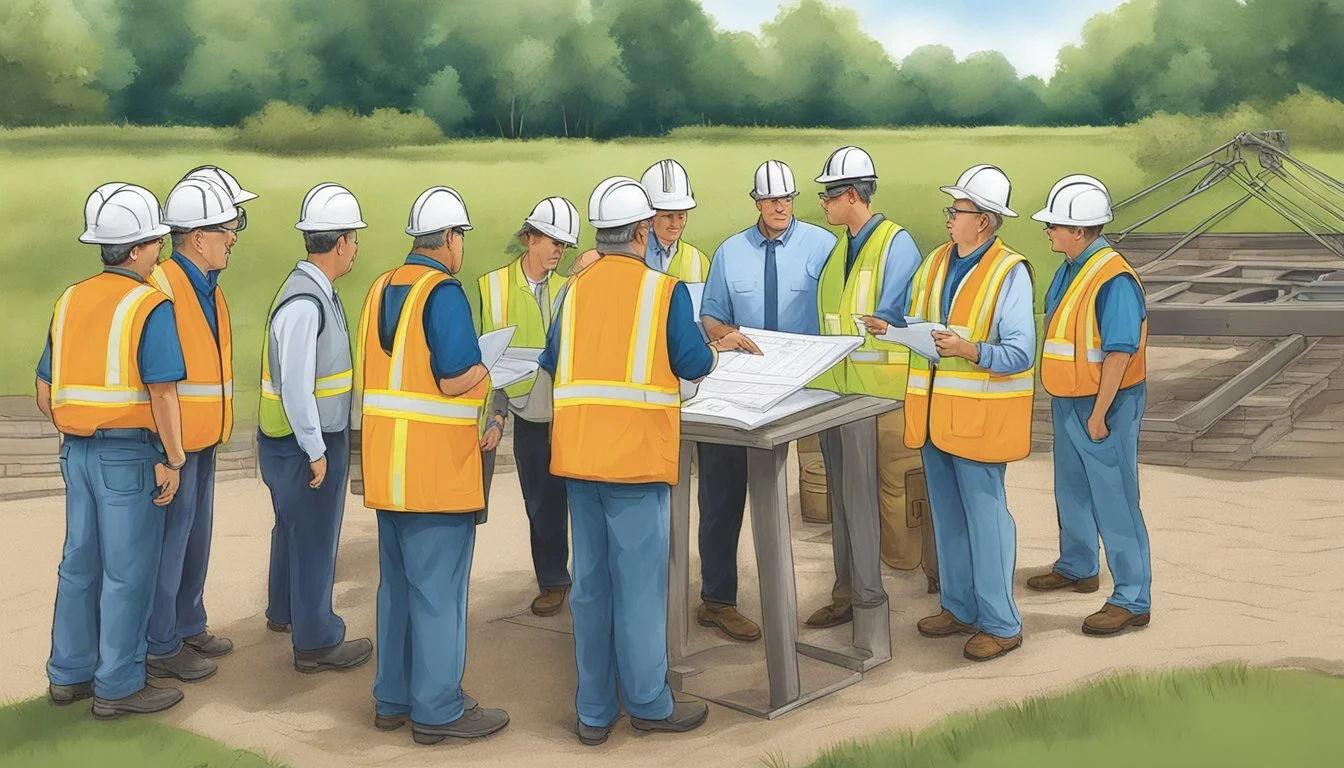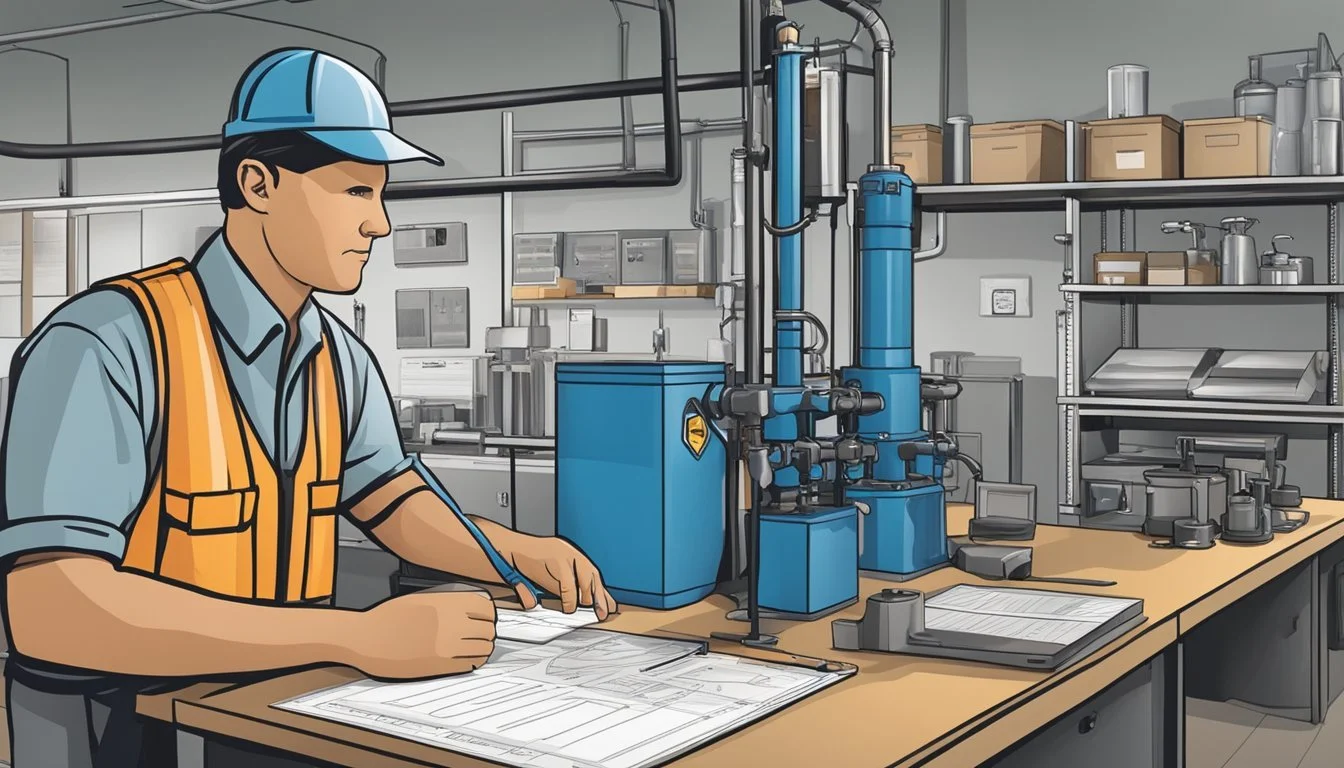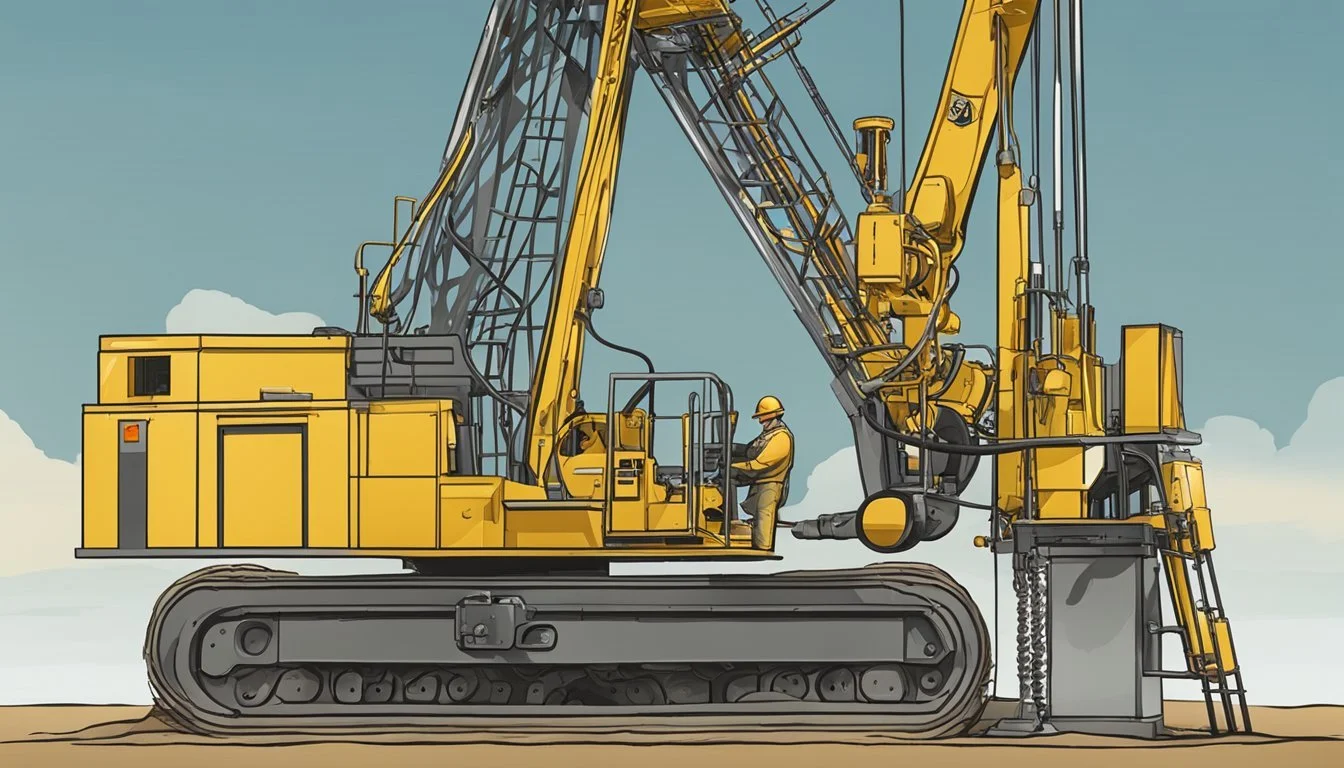Indiana Water Well Regulations
Understanding Your Compliance Responsibilities
Water well regulations in Indiana are designed to ensure that the construction and maintenance of wells adhere to state-mandated standards, protecting the groundwater resources and public health. These regulations establish guidelines for placement, drilling procedures, operation of equipment, contamination prevention, and specification of well components. Indiana's rules are administered by various state agencies responsible for the oversight of water resources, and compliance with these standards is mandatory for contractors operating in the state.
In Indiana, responsible parties must adhere to construction standards that address well casing specification and installation, grouting procedures, and the design and installation of well screens. Legislation such as the Indiana Administrative Code Title 312, Article 13 details the requirements for water well drillers and pump installers, illuminating the qualifications and criteria they must meet. Furthermore, the code ensures that the licensed professionals remain up-to-date with the current best practices through continuing education.
The effectiveness of the groundwater regulations is continuously monitored and adapted as needed to address new challenges and technologies. As such, any changes or updates to the regulations are published and disseminated to ensure statewide observance of the latest water well drilling and ground water rules. Compliance with these regulations also involves maintaining detailed records of well construction, which is vital for the ongoing assessment and management of Indiana's groundwater resources.
Legal Framework and Definitions
In Indiana, water well regulations are defined under a combination of statutes and administrative codes that outline the legal parameters for water well drilling, as well as the licensure of professionals in this field. These laws are key to managing Indiana's water resources responsibly and protecting public health and the environment.
IC 25-39 and 312 IAC 1
Indiana Code 25-39 (IC 25-39) provides the statutory framework for the regulation of water wells within the state. It establishes critical definitions and sets forth provisions for the administration of water well drilling activities. Specifically, this statute outlines the criteria and procedures for the licensing of water well drillers and pump installers, emphasizing the importance of professional qualifications in ensuring safe and legal well construction and maintenance.
Administrative rules, identified as 312 Indiana Administrative Code 1 (312 IAC 1), complement these statutes and provide detailed guidelines on the implementation of the law. Together, IC 25-39 and 312 IAC 1 form the foundation of Indiana's regulatory approach to groundwater and well drilling.
312 IAC 13: Water Well Driller Licensing
312 IAC 13 addresses the licensing requirements for water well drillers in Indiana, establishing a clear process to ensure that only qualified individuals undertake the drilling of water wells. This section of the code specifies the following necessities for obtaining a license:
Eligibility Criteria: Minimum experience, education, and technical knowledge requirements.
Application Process: Steps that applicants must follow to successfully apply for a license.
Examinations: The need for passing certain examinations to demonstrate proficiency in water well drilling and understanding of state regulations.
This administrative code ensures that licensees uphold industry standards, thereby contributing to the integrity and safety of water well construction throughout Indiana.
Pre-Construction Planning
Prior to the construction of a water well in Indiana, specific planning measures must be taken to ensure compliance with state regulations. These measures include adhering to strict location requirements and understanding the geological formations, as well as the static water level, which are pivotal for the proper placement and functioning of the well.
Location Requirements
In Indiana, water well construction must meet minimum distance standards from potential sources of contamination to protect water quality. These standards are rigorously enforced and include separation from septic systems and other potential hazards. For instance, Indiana regulations dictate the exact distance a water well should be located from a property's septic system to prevent any risk of well water contamination.
Geological Formations and Static Water Level
Understanding the underlying geological formations is crucial for determining the optimal placement of a water well. The characteristics of these formations affect the yield and quality of the water. Indiana's diverse geologic foundation requires thorough analysis to identify aquifer characteristics. Additionally, the static water level—the level at which water stands in a well when pumping is not occurring—provides essential data for designing the well system. This information helps in deciding the depth of the well and the type of pumping equipment needed for efficient water extraction. Information regarding the geological formations and implications for water well construction can be found linked within the resources of the Indiana Department of Natural Resources.
Well Construction Standards
Indiana's water well construction standards are essential to ensure the safety and integrity of private water wells. These standards specify the requirements for materials, construction methods, and the finished structure of the well.
Casing and Well Screen Specifications
Casing Materials: Well casing must be durable, watertight, and resistant to corrosion. The standards often recommend the use of thermoplastic pipe or steel with a minimum wall thickness. They must be suitable for the purpose and meet approved standards like those set by the Indiana Administrative Code.
Casing Diameter: The minimum diameter is usually specified, allowing enough room for proper installation and operation of the pump.
Casing Length: The casing must extend a certain distance above ground level to prevent contaminants from entering the well.
Well Screen: If the well requires a screen, it must:
be designed to prevent excessive sediment from entering the well,
support the surrounding aquifer material,
allow ample water flow into the well.
Grouting Procedures
Grouting Material: A primary objective in grouting a water well is to protect the aquifer and surrounding formations from contamination. Grouting materials typically include neat cement, bentonite clay, or other approved substances capable of creating an impermeable barrier.
Grouting Standards: Applied between the borehole wall and the casing, grouting needs to be:
placed immediately after the casing installation,
continuous to a minimum depth specified by regulations, ensuring protection from surface contamination.
Installers must use techniques such as pressure grouting to achieve a seal that meets the performance expectations outlined in the Indiana Code and the associated Administrative Code instructions. These preventive measures provide critical safeguards to maintain water quality and integrity of the well structure.
Operational Procedures
In Indiana, operational procedures for water well drilling and maintenance are meticulously defined to ensure both safety and efficiency. State regulations specify standards for how wells should be drilled and maintained, covering aspects like well yield and disinfection for operational integrity.
Drilling Procedures
The Indiana Department of Natural Resources mandates specific standards for well siting, construction, and operation. Drilling procedures must be meticulously followed to avoid any environmental contamination and to ensure the long-term usability of the well. For instance, operators must adhere to guidelines regarding the placement of wells and the drilling process, which are in place to prevent the contamination of water sources and to protect the surrounding ecosystem. Details on these procedures can be found within the guidance provided by the DNR: Water: Ground Water & Wells.
Well Yield and Disinfection
Well Yield: The yield, or the amount of water that can be extracted from a well, is a critical factor in its design. Operators must conduct proper testing to determine sustainable yield levels that comply with minimum stream flow requirements.
Well Disinfection: Following well construction or repair, wells must be properly disinfected to safeguard against microbial contaminants. This practice involves the use of specific chemicals and adherence to safety protocols to ensure that the water remains safe for use. Guidelines for disinfection practices can be found in the regulations set forth by the Indiana Code.
These procedural details are critical for the proper operation and maintenance of water wells, and they support the consistent delivery of clean, potable water to Indiana's residents and industries.
Well Driller Responsibilities
In Indiana, water well drillers have specific obligations relating to record-keeping and adherence to state standards. These responsibilities are crucial for maintaining public health and resource management.
Record Keeping
Each water well driller is required to maintain precise records for every well they drill. These records must include detailed information such as the well's location, construction details, and the materials used. It is imperative that the records are meticulously preserved and accurate, as this data is vital for both regulatory compliance and future reference. The Indiana Department of Natural Resources provides a comprehensive Water Well Record Database for drillers to submit their reports.
Standards Compliance and Enforcement
Drillers must ensure that their work complies with the Indiana Administrative Code concerning water well drillers, which outlines the state's standards for well construction, equipment, and installation. Enforcement of these regulations is handled by the Indiana Department of Natural Resources, which has the authority to inspect wells, evaluate driller compliance, and take necessary actions against violations to uphold the integrity of water resources and public safety.
Well Maintenance and Abandonment
Proper well maintenance is crucial to safeguarding groundwater resources, and the structured protocols for the abandonment of wells ensure environmental protection.
Maintenance Practices
Maintaining water wells involves regular inspection and testing to ensure structural integrity and water quality. Landowners are encouraged to monitor their wells for any signs of damage or contamination. A licensed driller or pump installer typically determines well depth and assesses the need for repairs or upgrades to maintain the well's operation and prevent groundwater contamination.
Inspection Frequency: At least annually, or as dictated by changes in water quality or well performance.
Key Maintenance Actions:
Checking and repairing well casings.
Assessing and replacing well caps.
Testing water quality for bacteria, nitrates, and other contaminants.
Cleaning sediments and obstructions from the well.
Sealing and Plugging Abandoned Wells
Abandoned wells present a risk of groundwater contamination and must be properly sealed or plugged. The Indiana Department of Natural Resources Division of Water provides guidelines for the plugging and sealing process.
Sealing Requirements: A watertight cap is required for wells abandoned before January 1, 1988, to prevent contaminants from entering.
Plugging Materials: Use of impervious materials like grout or concrete to fill the well.
Stages of Plugging and Sealing:
Remove any pumps, pipes, and other obstructions.
Disinfect the well to neutralize any bacteria.
Fill the well with approved plugging materials from the bottom up to prevent vertical movement of water and contaminants.
Seal the well at the surface to prevent direct contamination from surface water.
Compliance with these Indiana water well drilling statutes and regulations is not just legally mandated; it is a practical measure to maintain public health and environmental integrity.
Regulatory Updates and Resources
Regulatory compliance for water wells in Indiana is a dynamic environment with regular updates. Practitioners and the public must stay informed of the latest changes by consulting updated documents and guidelines distributed by established authorities.
Updated Regulatory Versions
The Indiana Department of Environmental Management (IDEM) and the Department of Natural Resources are key providers of regulatory information on water well standards. Updates to regulations are released on a quarterly basis, enabling a comparison with prior versions. These updated quarterly versions highlight new features or revisions that have been made since the prior quarter.
Department and EPA Guidelines
Guidance from the EPA supplements state-level documents, offering a broader context for water quality standards and well regulations. The Department of Natural Resources works in tandem with the EPA to align state-specific regulations with federal guidelines. It provides comprehensive directives on water well construction, location, and maintenance which can be cross-referenced with EPA-established frameworks for greater clarity.
Specification References
In Indiana, well construction and maintenance are guided by precise standards, including the adoption of American Petroleum Institute (API) specifications for equipment and materials. These standards ensure that contractors adhere to established protocols for well integrity and safety.
API Standards for Equipment and Materials
The American Petroleum Institute stipulates norms like API-5A and API-5L, which are critical for the selection of materials and equipment in the construction of water wells. These standards cover technical specifications such as depth, diameter, and the resilience of the materials used in well construction. Contractors must comply with these API standards to ensure the structural integrity and longevity of water wells.
API-5A: This specification details the properties of casing and tubing for wells, including dimensions, strength, and suitability.
API-5L: This standard outlines requirements for line pipe used in conveying gas, water, and oil in both the oil and natural gas industries.
List of Approved Construction Materials
A detailed list of approved construction materials is maintained to guide contractors in selecting compliant resources for well construction. This list encompasses a range of components that are suitable for various well dimensions and conditions.
Pipes and casings must align with API standards regarding their diameter and depth-specific properties.
Approved sealants and cements safeguard against contamination and ensure a watertight seal throughout the well structure.
By adhering to these stringent specifications, Indiana ensures the quality management of water well construction and the safeguarding of water resources.
Frequently Asked Questions
Navigating the regulations surrounding water wells in Indiana can be complex. This section addresses common inquiries that property owners and contractors may have about the permitting process, well abandonment, drilling costs, the water table, water rights, and casing size regulations in the state.
What is the process for obtaining a well permit in Indiana?
In Indiana, individuals must apply for a water well permit through the Department of Natural Resources (DNR) before beginning any drilling. The application must include the proposed well location, purpose, drilling method, and identify the contractor performing the work. For more details on the application process, check the DNR's guide on Water Availability Use/Rights.
What are the requirements for well abandonment in Indiana?
When a well is no longer in use, Indiana law requires proper abandonment to prevent contamination of groundwater resources. This includes filling and sealing the well with approved materials. Specific procedures must be followed as outlined by the Indiana Administrative Code, which can be found through resources provided by the DNR's Ground Water & Wells section.
What is the average cost of drilling a well in Indiana?
The cost of drilling a well in Indiana varies depending on depth, location, geology, and other factors. Property owners should obtain quotes from licensed drilling contractors who can provide a more accurate estimate based on the specific conditions of the site.
How is the water table mapped in Indiana for well drilling purposes?
Indiana's water table is mapped through ground water assessment programs conducted by the Indiana Department of Natural Resources. These maps provide valuable information for drilling and resource management, which are available for public use and can be accessed on the DNR's website under Ground Water Assessment Maps & Publications.
What are the legal considerations regarding water rights in Indiana?
Water rights in Indiana are governed by statutes and common law, which establish the rules for lawful use of water resources. This includes the riparian doctrine for surface water and reasonable use doctrine for groundwater. These laws are detailed in the Indiana Code, specifically pertaining to Water Rights; Surface Water.
What regulations dictate the casing size for water wells in Indiana?
The Indiana Administrative Code specifies the minimum casing sizes and standards for water wells to protect them from contamination and ensure the structural integrity of the well. The requirements are adjusted according to the type of well and the local geology, and these regulations are set by the Indiana DNR, which licenses water well drilling and pump installation contractors.











